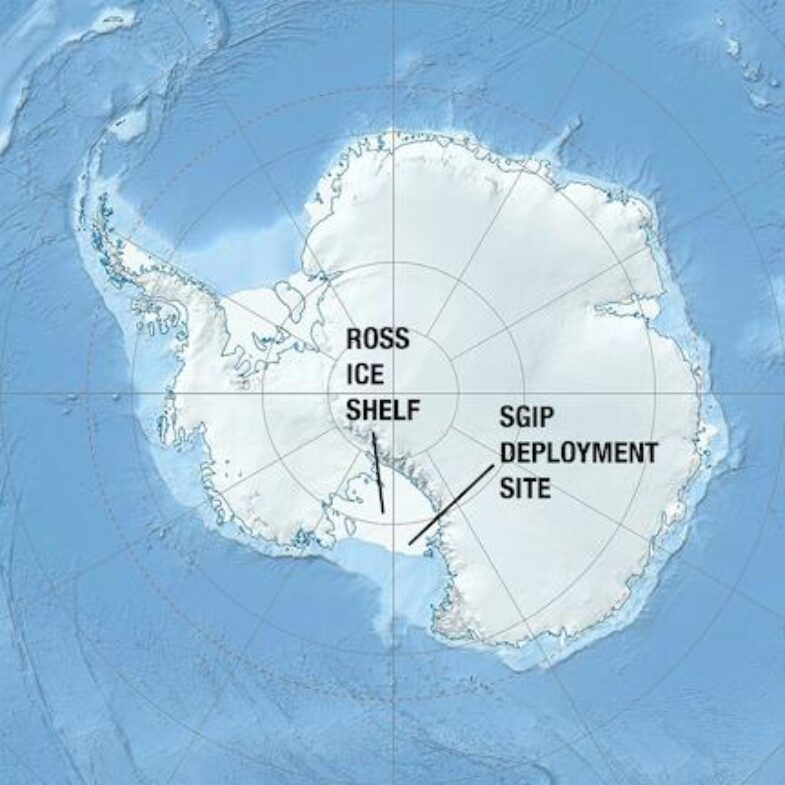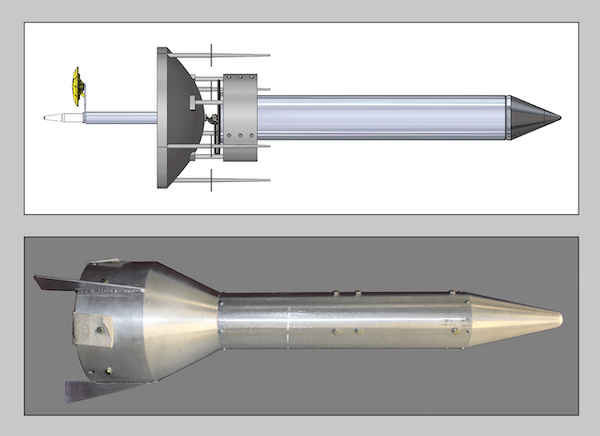
Measuring Antarctic ice shelf stability
A team led by Haystack researchers has been funded by the National Science Foundation (NSF) for the creation and deployment of a new instrument, a Seismo-Geodetic Ice Penetrator (SGIP), which represents a new approach for measuring in-situ changes in environmental conditions in the Antarctic via cryo-seismogeodesy.
The Antarctic continent is covered by a massive sheet of ice. The ice sheet gains mass by snowfall and losses mass by melting and calving of towering icebergs. Losses occur primarily at the ice shelves. These are the Antarctic-rimmed floating extensions where the ice sheet meets the ocean.

The stability of Antarctic land-based ice sheet depends on the stability of the oceanic ice shelves, because the ice shelves act as a buttress, restraining and modulating the amount of ice that can flow into the ocean. When ice shelves thin and weaken, as is currently observed, they can disintegrate, which leads to accelerated discharge of land-based ice to the ocean. Once the ice reaches the ocean, it contributes to accelerating sea-level rise. Earth’s climate and the state of Antarctic ice are intimately linked through the stability of the ice shelves. It is therefore critical to understand how the Antarctic ice shelves are responding to ongoing changes in atmospheric and ocean conditions.
The extreme conditions of the Antarctic environment present an engineering challenge to the deployment of scientific instruments, which must be able to survive in such a brutal climate.
A collaboration between Haystack and MIT AeroAstro, borne out of an undergraduate capstone course, the Antarctic SGIP project will combine cryo-seismology and cryo-geodesy for the first time into a single instrument. Two SGIP units will be dropped from the air onto the Ross Ice Shelf (RIS) in the Antarctic to measure ice-shelf melting behavior and allow scientists to better understand ice-ocean-atmosphere dynamics in the region. A third SGIP will be manually emplaced in the RIS for ground-truth calibration. The units will operate continuously and autonomously for about a year, relaying science and engineering data over satellite link to Haystack in near-real time. The project has already provided numerous opportunities for student involvement and development at both undergrad and graduate levels, and additional significant opportunities via UROP, REU, and others exist.